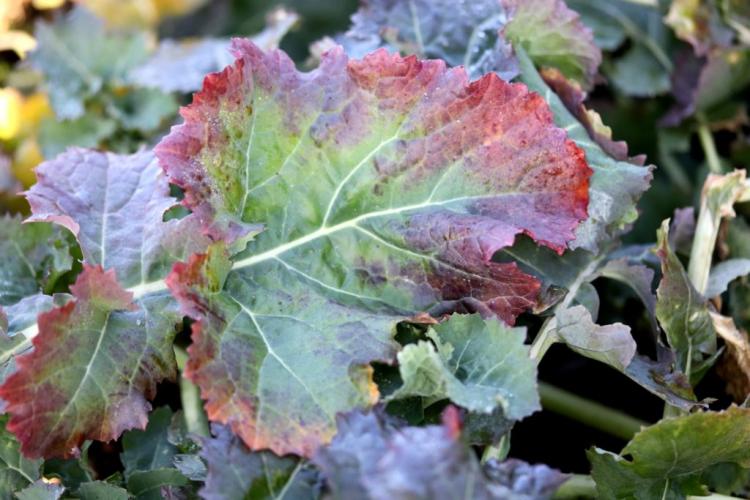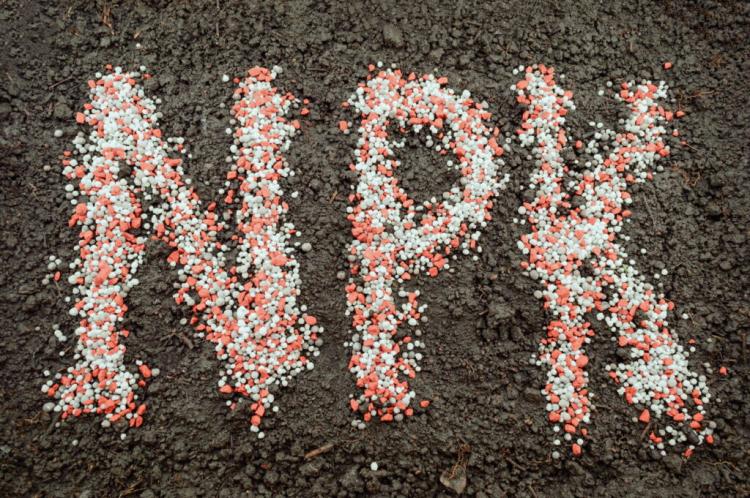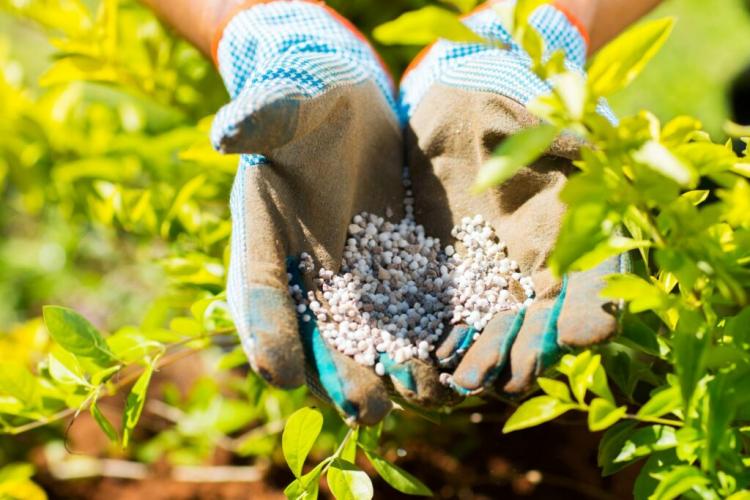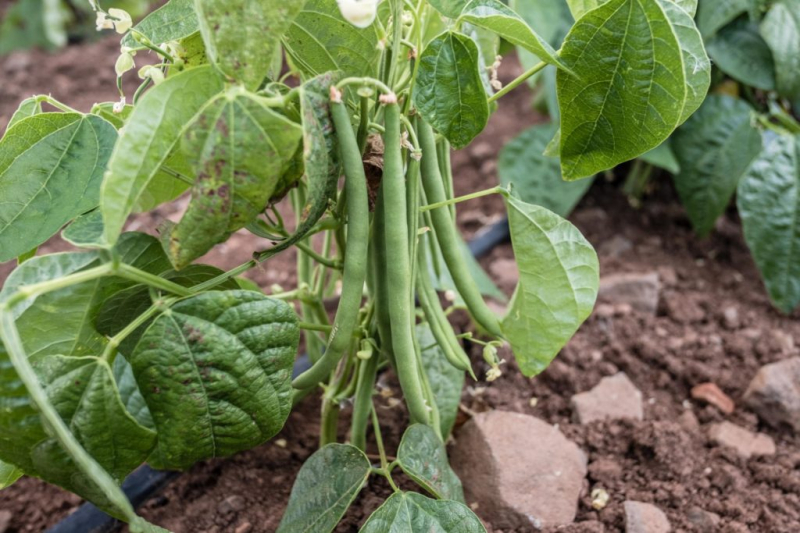Phosphate Fertilizers: Use And Properties
There are many phosphate fertilizers on the market. We explain to you why a plant needs phosphate, what kind of phosphate fertilizers there are, and how they work.
Phosphates are the salts of phosphoric acid (H3PO4) and are used for phosphorus fertilization. Phosphorus is vital for our plants and essential for the maintenance of many functions in the plants.
We know phosphorus particularly from complex fertilizers, which mostly contain phosphorus, but there are also pure phosphorus fertilizers. In our article, you can find out what our plants need phosphorus for and what differences there are in phosphate fertilizers.
Why does the plant need phosphate?
Table of Contents
Phosphorus is mostly absorbed by plants in the form of phosphate (H2PO4– and HPO42-) and is required for various functions in the plant. This nutrient is vital for your green darlings.
The main functions of phosphorus in the plant are as follows:
- Forms an important cell component
- Part of carbohydrates
- Part of the DNA and RNA
- Important when building enzymes
How do you recognize a phosphate deficiency?
If the plant is deficient in phosphorus, this leads to various deficiency symptoms. Such deficiency symptoms usually first appear on the older leaves. These include the following symptoms:
- Inhibition and cessation of plant growth
- Rigid leaf position, hence the name “Rigid Tracht”
- Poor stature
- Dark to blue-green matt color
- Leathery and dirty green in appearance
- Red discoloration of the stems and veins
- Leaf fall and balding of the shoots
- Symptoms of deficiency are often difficult to assign

Since the nutrient magnesium is also required for the transport and absorption of phosphate from the soil, a lack of magnesium in the soil often leads to a phosphate deficiency.
In addition, iron and aluminum inhibit the absorption of phosphate in acidic soils. If the soil is rich in lime, the calcium it contains leads to the precipitation of phosphates. Calcium phosphates are then formed, which are sparingly soluble and can no longer be absorbed by plants.
Properties of phosphate fertilizer
Phosphate fertilizers mainly supply plants with the main nutrient phosphorus (P) in the form of salts of phosphoric acid. Pure phosphorus does not dissolve very well in water, which is why it must first be processed to be able to use as a fertilizer. Insoluble calcium phosphate is broken down with the help of different acids, making the nutrients available to the plants.
Phosphorus is mainly absorbed by the plants via the roots, i.e. via the soil solution. Phosphate foliar fertilization is therefore only suitable for covering short-term peaks in demand. At a pH between 6.0 and 7.0, the phosphate in the soil is best available to the plants and can be most easily absorbed.
Effect of phosphate fertilizers
The phosphate fertilizer not only supplies plants with the nutrient phosphorus and thus prevents symptoms of deficiency, but it also affects the soil.
If the phosphate fertilization is too high, the nutrient can be leached into the groundwater and water bodies and have an impact there.

If nutrients such as phosphorus accumulate in the water, there is, therefore, an increased growth of aquatic plants and algae – this process is called eutrophication. When these aquatic plants die, they sink to the bottom of the water and are broken down microbially there. However, this degradation requires a lot of oxygen and can lead to a lack of oxygen in the waters. In addition, toxins can form and the lack of oxygen can lead to the death of fish and other living things in the waters.
So be careful with phosphate fertilization, because generally the garden soils in the USA are sufficiently supplied with phosphorus. However, if you want to be on the safe side, get a soil survey done. This is how you can determine the nutrient content in your soil. During a soil examination, different content classes of the soil are determined. The following values are found for phosphorus:
- A (low): 0 to 5 mg of phosphorus per 100 g of soil
- B (medium): 6 to 14 mg of phosphorus per 100 g of soil
- C (high): 15 to 25 mg of phosphorus per 100 g of soil
- D (very high): 26 to 40 mg of phosphorus per 100 g of soil
- E (particularly high): over 40 mg phosphorus per 100 g soil
Application and use of phosphate fertilizers in universal fertilizers
Phosphorus must not be missing in universal fertilizers or complex fertilizers; it is also part of NPK fertilizers. There the phosphorus is present together with nitrogen and potassium.
Phosphate fertilizer
As already mentioned, the well-known mineral NPK fertilizers contain nitrogen, phosphorus, and potassium. They differ in the composition as well as in the proportions of the individual components. The phosphate content of these complex fertilizers is usually between 5 and 15% phosphorus.

There are also special bi-nutrient fertilizers that usually contain two of the nutrients nitrogen, phosphorus, and potassium. A nitrogen phosphate fertilizer, also called NP fertilizer, contains around 20% phosphate. Another two-nutrient fertilizer is Thomas phosphate potash, which contains 10% phosphates. Thomas flour is also a phosphate fertilizer, which consists of 15% phosphate and is a by-product of steel and iron production.
Fertilizer with a predominant phosphate content
Fertilizers with a predominant proportion of phosphate are mainly used in agriculture. In our garden soil, there is usually enough phosphorus already and such large gifts are not necessary.
An example of a phosphate fertilizer with a high phosphate content is diammonophosphate (DAP). This consists of nitrogen and phosphorus and forms light brown granules. DAP contains 46% highly concentrated phosphate, 41.5% of this phosphorus is water-soluble. DAP is easy to store and transport because the fertilizer does not attract water and therefore does not clump together.
Monoammon phosphate (MAP) is another granular fertilizer that consists of nitrogen and phosphate. MAP can also be dissolved in water and contains approximately 52% phosphate. MAP can also be stored optimally and likewise does not tend to clump.
A well-known group of phosphate fertilizers is superphosphates, which differ in their phosphate content as well as in their composition. Calcium phosphate and sulfuric acid are used to produce superphosphate. The resulting fertilizer contains 16 to 22% phosphate. However, there is also double superphosphate, which contains 35% phosphate, and triple superphosphate, which even contains 46% phosphate.
Phosphate in organic NPK fertilizers
In addition to nitrogen and potassium, organic complex fertilizers also contain phosphorus. Of course, the phosphate content in organic fertilizers is lower than in mineral fertilizers. Nevertheless, one should not overdo it with phosphate fertilization and handle this nutrient responsibly. Organic fertilizers also belong to complex fertilizers, which mainly consist of plant-based raw materials.
You might so like: Toxic Heavy Metals In The Garden From Fertilizers?
In addition to components such as vinasse or wheat gluten flour, organic fertilizers also contain rock phosphate, which ensures a long-term phosphorus supply for plants and soil. Organic universal fertilizer contains 3% phosphorus, the organic flower fertilizer from Gardender 2% phosphorus. So if you rely on the organic fertilizers from Gardender, you are also relying on a deliberately chosen lower phosphate content, which is completely sufficient. In this way, you activate the soil life and promote the availability of nutrients in the soil.
Phosphate in mineral NPK fertilizers
Phosphorus can of course also be found in complex mineral fertilizers. The advantage of such fertilizers is that the nutrient concentration is precisely known and the phosphorus is available more quickly than inorganic fertilizers. Unfortunately, the mineral fertilizers contain too much phosphate compared to the required amount.
In the event of an overdose of mineral fertilizers, there is ultimately always the risk of environmental pollution and the eutrophication of water bodies, as has already been mentioned above. Therefore, you should always follow the manufacturer’s dosage instructions meticulously. You should also pay attention to your own health when using mineral fertilizers, as these can cause health damage such as irritation to the skin. Therefore, you should always pay attention to the necessary personal protective equipment when using mineral fertilizers.






